(3433 products available)



































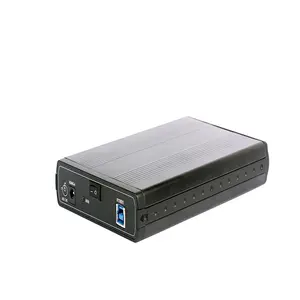


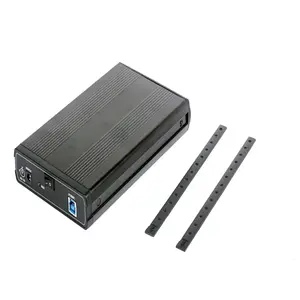
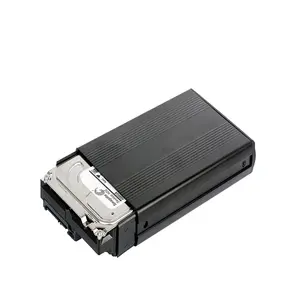



































































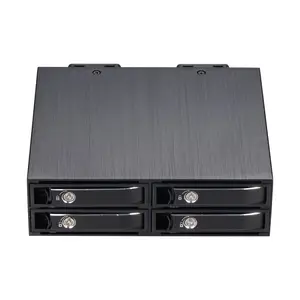

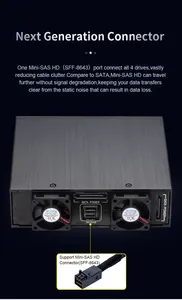































































































SAS to USB devices connect a Serial Attached SCSI (SAS) storage system to a device's USB port. The system comprises hard drives that work together to store electronic data. This process allows the USB port to communicate with the SAS system.
The following are some common types of SAS to USB adapters:
The SAS-to-USB adapters are popular among data enthusiasts and IT professionals for their versatility and convenience. Here are the common features of SAS-to-USB adapters:
Data Transfer Speed
The adapter ensures fast data transfer between different devices. The USB 3.0 standard supports a transfer speed of 5 Gbps, while the USB 3.1 generation two can transfer data at a speed of 10 Gbps. On the other hand, a Serial Attached SCSI can run at 3 Gbps and up to 12 Gbps in a point-to-point connection. Combining these two technologies creates an efficient and fast data transfer channel for devices that require high bandwidth, such as streaming 4K video or large data transfer.
Direct Device Connection
SAS adapters connect directly to laptops and desktops via a USB interface. It provides a simple plug-and-play option that does not need users to configure complex systems or remove external hard drives from enclosures. These direct connections make the SAS interface devices accessible to users with basic technical skills.
Device Compatibility
USB SAS adapters are versatile because they work with various devices. They include external hard disk enclosures, docking stations, RAID controllers, and other devices with SAS interfaces. The wide compatibility allows users to connect and use a broad range of peripherals and storage devices.
Power Supply
SAS-to-USB adapters draw power from the host USB port. The power is enough to run portable hard disks, flash drives, and other low-power peripherals. However, high-power devices may need an external power supply adapter to provide power.
Portable Design
The adapters have a small and lightweight form factor. This makes them easy to carry about. Users can keep the adapter in a bag or pocket and take it wherever it is needed.
The main task of SAS USB adapters is to connect SAS drives to computers. However, the specific uses of these adapters are diverse. Here are a few important use cases for your consideration:
There are numerous points to consider when purchasing a USB converter for the %SAS to USB% purpose. These tips can assist purchasers in making an educated choice and purchasing a gadget that will work with their prerequisites.
Examining the contraption's speed is pivotal, for example, the SAS to USB link speed. The SAS link speed must be faster than the USB. This guarantees that the SAS link's advantages are not lost. Check out the speeds, for instance, USB 3.0, which can arrive at 5Gbs and SAS 6, which can accomplish 6Gbs.
The following thing one needs to do is inspect the contraption's dependability. The SAS interface converter's stability and precision in working under strain is critical to its power and success. Customer reviews and independent testing can provide valuable information about the gadget's dependability.
The successor should be compatible with other gadgets already present in a framework. Purchase does not need an upgrade to different links, attachments, or contraptions in light of the new gadget. Guaranteeing similarity will make the SAS connection smoother and consistent.
One more perspective to consider is affirmations. Now and again, SAS gadgets need endorsements to work accurately inside specific enterprises or settings. The accreditations can be significant and pivotal relying upon the business. Before buying any gadget, check whether it might require any endorsements to comply with industry guidelines.
This contraption's make quality should be taken note. The eventual effects have a significant bearing on the contraption inside its working setting. Thus, the development quality can productively impact the contraption's life. Examining the improvement quality before buying can help one with picking a SAS contraption that will not crash.
The vendor's reputation can give one more understanding into the SAS contraption's productivity. The seller's reputation can assist one with choosing a quality SAS contraption. The reviews and past customers' feedback can offer supportive bits of knowledge concerning the vendor.
Guarantee the contraption can manage the supposition limit. Various SAS gadgets can deal with different amounts of connections. Sincerely evaluating the number of connections expected can help one with choosing a SAS contraption that perfectly suits their requirements.
Q1 Is SAS faster than USB?
A1 Though USB and SAS can operate at similar speeds, USB offers higher data transfer rates with its latest versions, particularly USB 3.0, 3.1, and 3.2, reaching speeds up to 20Gbps. On the other hand, USB interfaces are more commonly used for connecting external devices to computers, whereas SAS connections are typically used to link storage devices within computer systems.
Q2 Is SAS USB 3.0 backwards compatible?
A2 Yes, the USB 3.2, USB 3.1, and USB 3.0 connectors are all backwards compatible with USB 2.0. This implies that USB 2.0 devices can be connected to USB 3.0/3.1/3.2 ports, but their transfer speeds will be restricted to USB 2.0 standards.
Q3 How much power does a USB to SAS adapter consume?
A3 The USB to SAS adapter's power consumption varies based on the model and the number of ports. Generally, it consumes between 5 to 15 watts. It is crucial to check the specifications for precise power usage.
Q4 What types of USB connectors can be used with USB to SAS adapters?
A4 USB to SAS adapters typically utilize USB type connectors like USB-A, USB-B, and USB-C. However, these adapters can only be used with devices and ports that support the corresponding USB connector type.